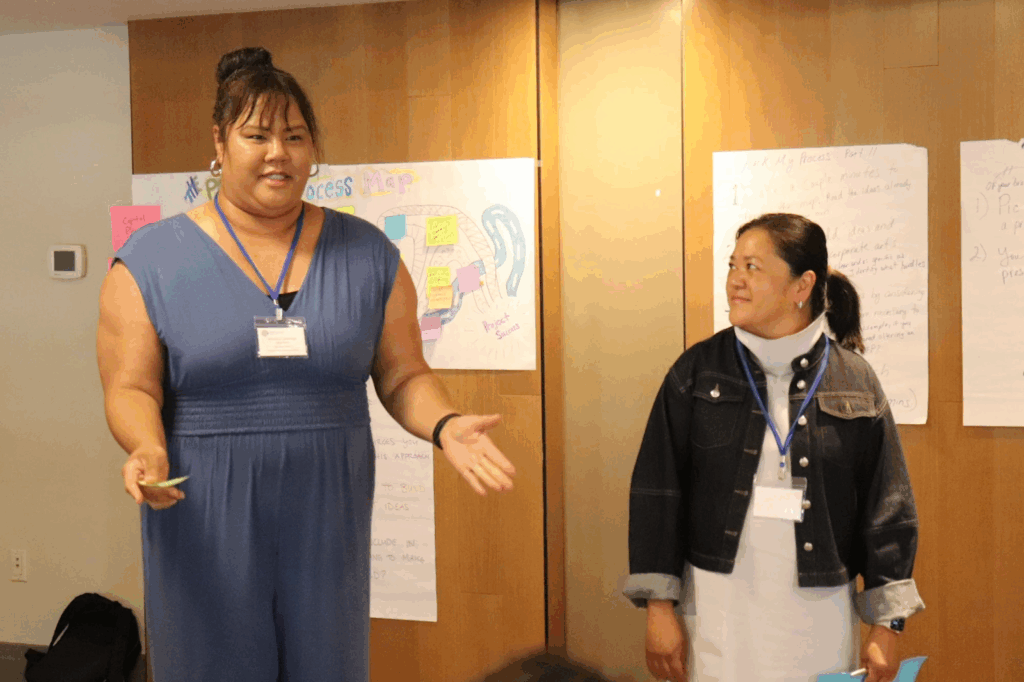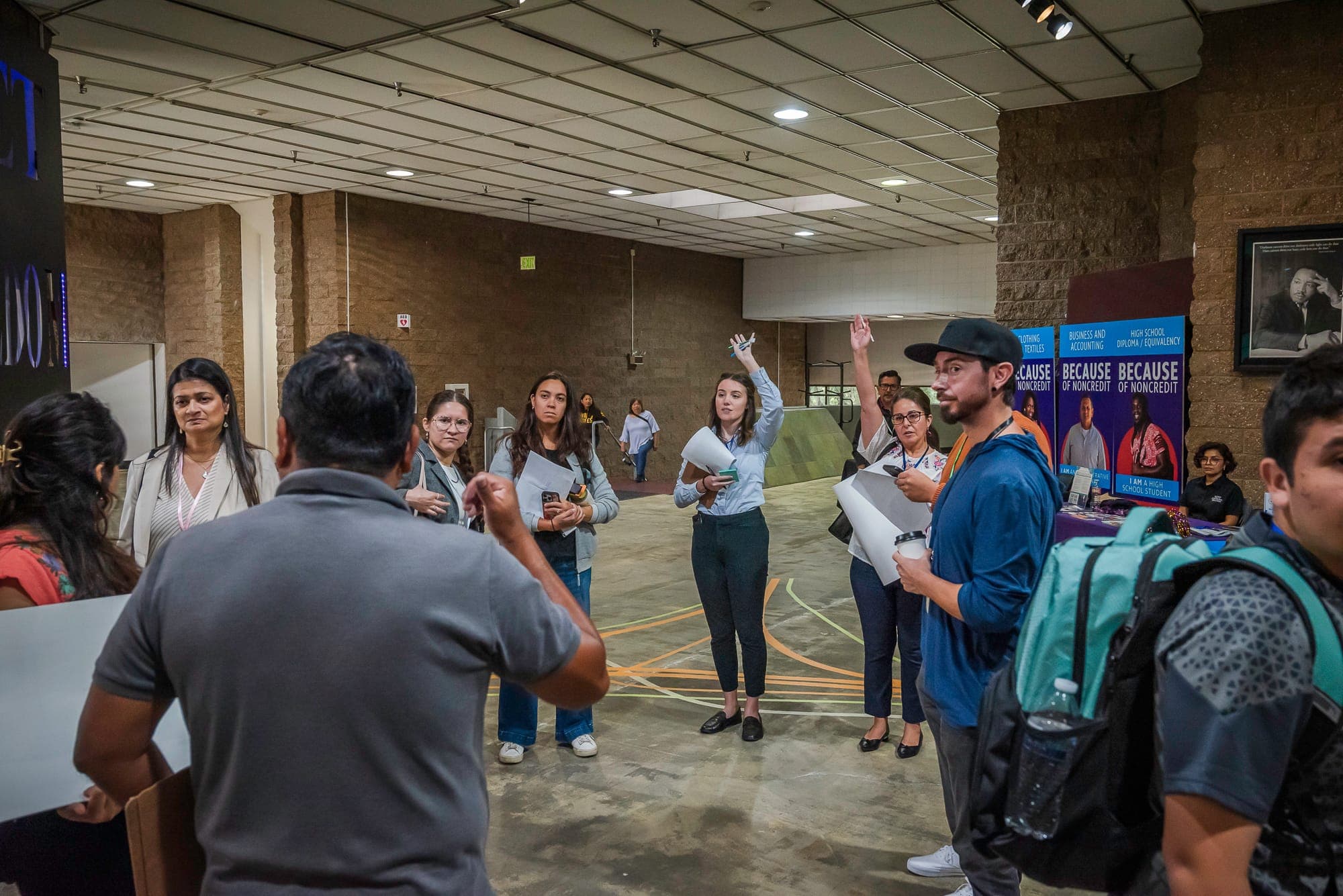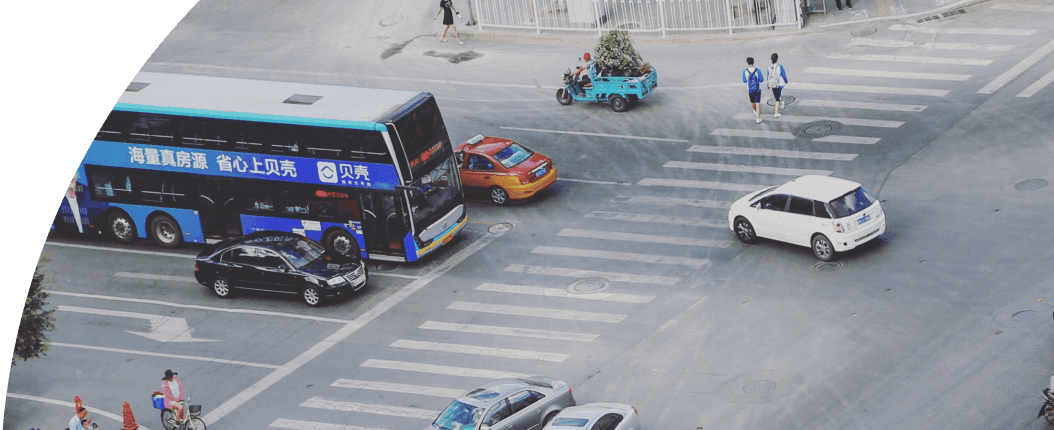
News
By Marian Liou, October 14, 2025
In the San Francisco Bay Area, the Metropolitan Transportation Commission and the Association of Bay Area Governments (MTC-ABAG) are jointly responsible for planning for one of the most diverse and dynamic regions in the country. With enormous pressure to deliver on transportation, housing, climate, and economic development goals, staff are finding that arts and culture can bring both new strategies and new ways of thinking to the table.

Arts and culture efforts in planning, power-building, and engagement
Staff see enormous potential for arts and culture as an approach and means for regional transformation, particularly in long-range planning processes like Plan Bay Area 2060, the region’s next comprehensive, 30-year plan. Veronica Cummings, the Principal Public Information Officer leading the Plan Bay Area engagement team, is developing a call for artists to help ensure public input feels meaningful, not formulaic. Her goal is to experiment with engagement methods that make residents feel their stories are truly part of regional planning.
This builds on earlier arts-based efforts at MTC-ABAG, such as a photography project that highlighted the human stories behind planning issues. While that individual-led initiative has ended, staff continue to look for ways to bring creative voices into major planning conversations.
One promising new program is the Community Action Resource and Empowerment (CARE): Power-building and Engagement Program, which includes a $250,000 cultural placemaking component for community-based organizations. Grants ranging from $50,000 to $100,000 support leadership development, multi-sector partnerships, and community-driven projects across the region.
Assistant Director of Evidence and Impact Judis Santos, who oversees CARE, drew inspiration from peer MPOs in the Culture and Community Network, including Portland’s community placemaking program. While the program is debuting this year, she envisions CARE as a way to build long-term capacity in underrepresented communities and demonstrate the value of integrating culture into core planning efforts.
With funding tied to the accelerated Regional Early Action Plan (REAP) and One Bay Area Grant (OBAG) programs, there are expectations to deliver results by December 2026. The timeline adds urgency and also opportunity to show how cultural strategies can strengthen equity and community impact.
Challenges and lessons learned along the way
Like many MPOs, MTC–ABAG faces challenges in advancing equity-focused programs. Staff have noted challenges in clearly articulating and operationalizing equity values and performance metrics, as well tension between organizational aspirations and external political uncertainties.
One suggestion for balancing these considerations is framing programs like CARE as iterative opportunities for institutional learning while setting achievable first-phase goals, rather than trying to realize their full potential immediately. This incremental approach may help secure leadership buy-in while laying a more flexible foundation for deeper integration over time.
Another theme that emerged in MTC-ABAG’s work is the importance of combining data-driven analysis with emotional resonance. Judis has championed the need to make space for emotional expression in policymaking, whether through storytelling, the arts, or even theater-based exercises that help staff embody community experiences.
This dual approach of anchoring decisions in both quantitative metrics and lived experience has the potential to change how planning conversations unfold, making them more accessible and human-centered.
Looking ahead
With new experiments in arts-based engagement, a major investment through the CARE program, and ongoing efforts to balance qualitative and analytical perspectives, MTC-ABAG is clearly on the threshold of weaving arts and culture into its core planning, design, and delivery work.
Leadership support, staff capacity, program design, and broad outreach to new collaborators will all be key to the continued development of these nascent efforts. Staff commitment to learning from peers, testing creative approaches, and using both data and stories to build a stronger case for cultural integration bodes well for the future. For MTC-ABAG, arts integration isn’t just about aesthetics. It’s about using creativity to unlock civic participation, center equity, and balance the emotional with the analytical in shaping the future of the region.
Related News

© 2025 Smart Growth America. All rights reserved
Site By3Lane Marketing














